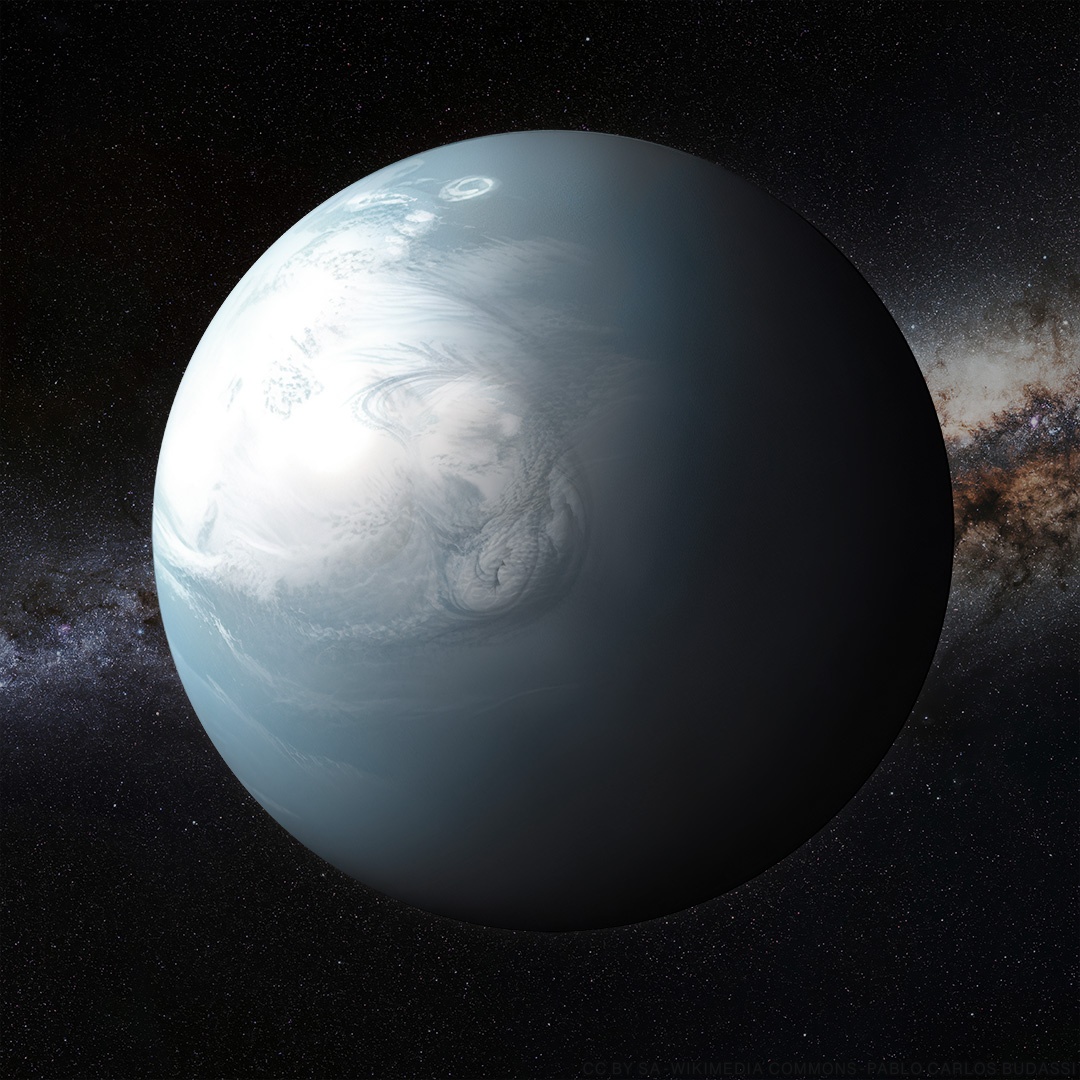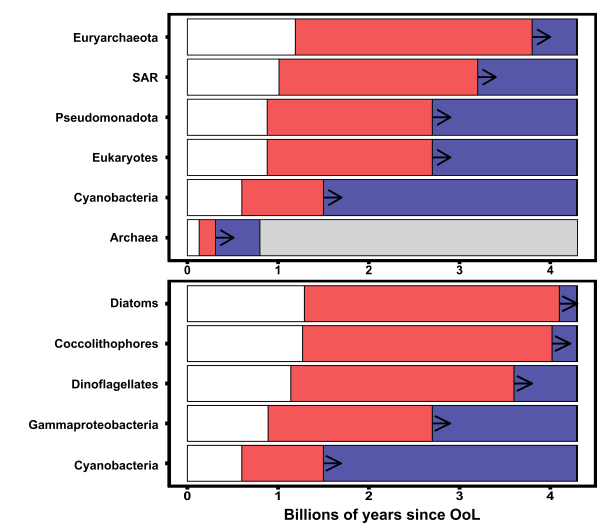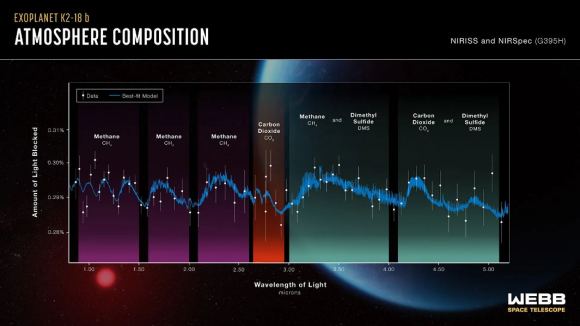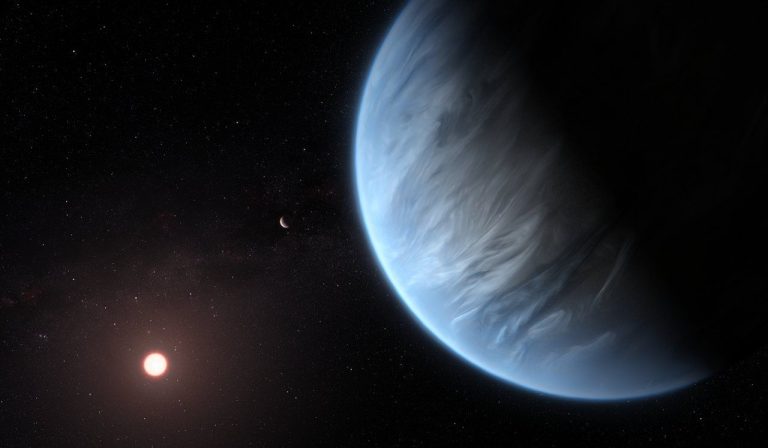Are Ocean Worlds Capable of Supporting Life?
The discovery and study of Hycean worlds, planets covered in oceans with hydrogen-rich atmospheres, present exciting possibilities for extraterrestrial life. These types of planets could provide conditions that allow microbial life to flourish, potentially offering valuable insights into the search for life beyond Earth. Current research suggests that Hycean worlds may have the necessary environmental factors, such as warmth and chemical composition, to support the evolution of life at a much faster pace than on Earth. If these worlds exist, they could be teeming with microbial life, making them prime candidates in the search for biosignatures and extraterrestrial life.
Summary
- Hycean worlds are ocean-covered exoplanets with hydrogen-rich atmospheres, which could support microbial life.
- JWST observations, especially on K2-18b, suggest the presence of important biosignatures such as methane, carbon dioxide, and dimethyl sulphide, potentially linked to microbial life.
- Metabolic theory of ecology (MTE) is used to study how life might evolve on these planets under different temperature conditions.
- Higher temperatures on Hycean worlds could speed up the evolution of unicellular organisms, possibly allowing complex life to emerge faster than on Earth.
- Phytoplankton groups like Cyanobacteria, Methanococccea, and diatoms could thrive on warmer Hycean worlds, producing key biosignature gases.
- K2-18b, a candidate Hycean world, has been identified as a strong target for detecting biosignatures and investigating potential microbial life.
- Evolutionary rates are directly influenced by surface temperature, with warmer temperatures leading to faster rates of life emergence.
- The potential existence of Hycean worlds could drastically change our understanding of habitability in the universe.

Introduction to Ocean Worlds and Hycean Planets
The search for extraterrestrial life has expanded far beyond the confines of our own solar system. One of the most exciting developments in this area is the discovery of ocean worlds, or planets entirely or largely covered by water. Hycean worlds are a class of ocean worlds that have recently garnered attention due to their potential to support life. The term “Hycean” is derived from the combination of hydrogen and ocean, describing planets that feature vast oceanic expanses beneath thick hydrogen-rich atmospheres. These planets are intriguing candidates in the search for life outside Earth.
The Characteristics of Hycean Worlds
Atmospheric Conditions
The key distinguishing feature of Hycean worlds is their hydrogen-rich atmospheres, which could create conditions suitable for microbial life. Unlike Earth, which has a nitrogen-oxygen atmosphere, these planets likely have thick atmospheres composed primarily of hydrogen with some traces of other gases like methane and carbon dioxide. These gases can act as potential biosignatures—indicators that life may exist on a planet. In addition to atmospheric composition, the surface temperature plays a significant role in determining the habitability of Hycean worlds.
Surface Temperature and Evolution
Recent studies have highlighted the role of temperature in the potential habitability of Hycean worlds. It is theorized that warmer oceans could increase the rate of evolution by speeding up metabolic processes, which are essential for the development of life. According to the Metabolic Theory of Ecology (MTE), higher temperatures typically accelerate biological activity, potentially leading to the rapid emergence of unicellular organisms. On Hycean planets, even a slight increase in surface temperature could lead to the origination of life much earlier than on Earth, where colder oceans slow down metabolic rates.
The Search for Biosignatures
One of the main challenges in studying distant exoplanets like Hycean worlds is detecting biosignatures—chemical markers that indicate the presence of life. The James Webb Space Telescope (JWST) has played a crucial role in detecting gases like methane, carbon dioxide, and dimethyl sulphide in the atmospheres of candidate exoplanets such as K2-18b. These compounds are often associated with microbial life here on Earth, making them potential signs of life on distant planets.
The JWST has provided important data on the composition of exoplanet atmospheres, including the presence of dimethyl sulphide, a gas linked to phytoplankton and known to be produced by living organisms on Earth. This discovery bolstered the idea that Hycean worlds may indeed harbor life.
The Role of Phytoplankton in Supporting Life
Phytoplankton plays a critical role in sustaining life on Earth by producing a significant portion of the planet’s oxygen. These microorganisms thrive in Earth’s oceans, producing key biosignatures such as dimethyl sulphide. Researchers have identified several types of phytoplankton, including Cyanobacteria, Methanococccea, and diatoms, as key players in the evolution of life on Earth and have hypothesized that they could also exist on Hycean worlds. These organisms would likely produce similar biosignature gases, which could be detected by telescopes like the JWST.

Temperature and Evolution on Hycean Worlds
According to a study titled “Prospects for Biological Evolution on Hycean Worlds”, researchers Emily G Mitchell and Nikku Madhusudhan explored how temperature affects the evolution of life on Hycean worlds. Using Aquifix, an early form of life on Earth, as an analogy, they showed that even a marginal increase in ocean temperature could lead to faster rates of evolution.
The study reveals that higher ocean temperatures could accelerate the emergence of unicellular organisms like Cyanobacteria and diatoms. For example, a 10°C increase in temperature could lead to the appearance of these organisms 1.3 billion years after the origin of life, much faster than on Earth, where life took several billion years to evolve.
The Importance of Surface Temperature
The researchers also investigated the impact of cooler temperatures on the origination of life. They found that cooler temperatures delay the appearance of key lifeforms by up to several billion years. This would slow down the rate at which microbial life evolves and, consequently, delay the detection of biosignatures. Therefore, a warmer Hycean world could have a more complex biosphere at a relatively young age, while a cooler one would take longer to develop a more intricate ecosystem.
Candidate Hycean Worlds
Several candidate Hycean worlds have been identified, including K2-18b, an exoplanet with a 2.4 billion-year-old ocean and potential biosignatures in its atmosphere. While the existence of Hycean worlds remains uncertain, these findings suggest that if such worlds exist, they could be prime candidates for the search for microbial life.
Challenges and Caveats
Despite the promising results, there are several challenges to confirming the existence of Hycean worlds. Some scientists have raised concerns about the stability of hydrogen-rich atmospheres, as well as the potential effects of radiation on life. Additionally, the formation and sustaining of these atmospheres are still not well understood. Therefore, while the evidence is compelling, more research is needed to confirm the existence of Hycean worlds and their potential to support life.
The chance of finding life on Hycean worlds is very exciting. It is a new area in the search for life beyond Earth. Hycean worlds are planets covered in oceans. Their atmospheres are rich in hydrogen. These planets might support tiny life forms called microbes. This is because they have conditions that support life, like warmth. They also have chemical compounds needed for life. Even though there are still challenges, studies show that Hycean worlds might have complicated ecosystems. Ecosystems are communities of living things interacting with their environment. These worlds offer a new way to look for signs of life, known as biosignatures. This helps us explore and understand the mysteries of the universe.

Fun Facts
- The James Webb Space Telescope (JWST) has revolutionized our understanding of exoplanets, helping scientists detect potential biosignatures in the atmospheres of distant worlds.
- The K2-18b exoplanet, a candidate Hycean world, is just 2.4 billion years old, making it an exciting target for further study in the search for life.
References
- Aquificota – Wikipedia
- Diatom – Wikipedia
- Metabolic Theory of Ecology – Wikipedia
- Prospects for Biological Evolution on Hycean Worlds – Monthly Notices of the Royal Astronomical Society












